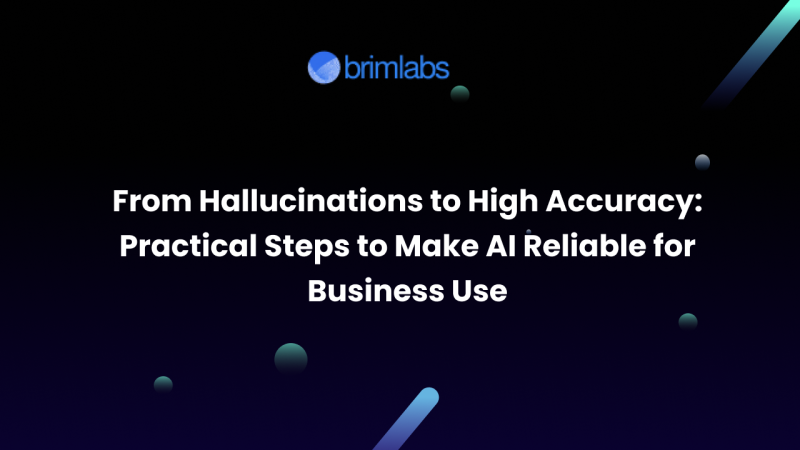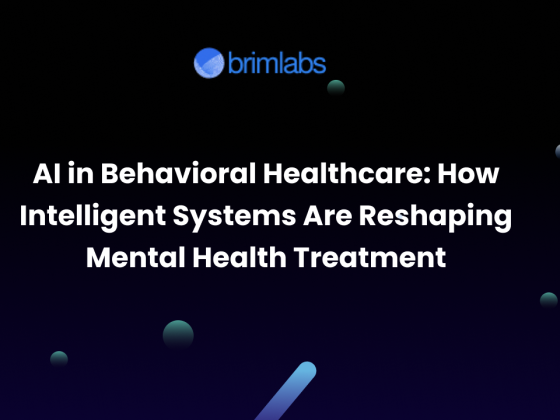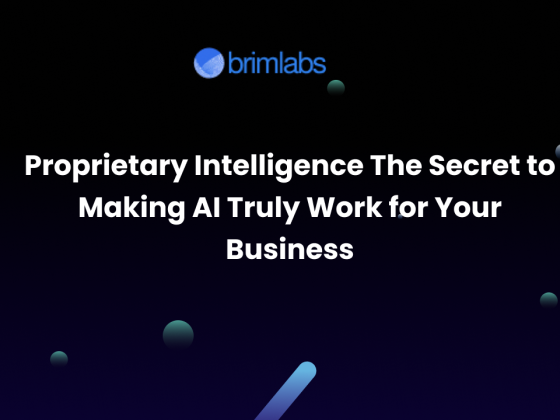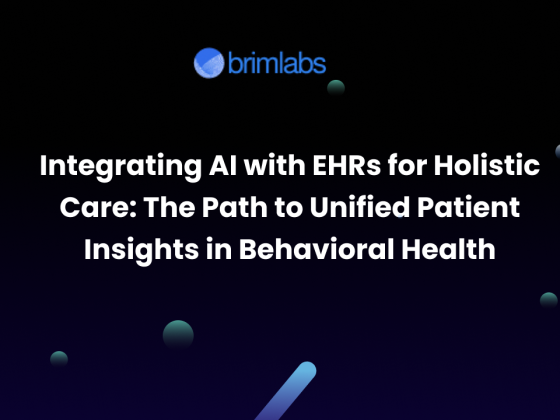AI is no longer experimental; it is embedded into financial systems, healthcare platforms, e-commerce engines, and enterprise workflows. Yet, despite its power, AI adoption is often slowed by a critical challenge: trust.
When an AI tool confidently generates a false answer, misses important context, or delivers inconsistent results, business leaders call it what it is, an AI hallucination. In everyday scenarios, a mistake may be harmless. But in high-stakes environments like underwriting loans, triaging patient symptoms, or ensuring compliance, hallucinations are deal-breakers.
The global AI market may be projected to exceed USD 1.8 trillion by 2030, but unless reliability issues are addressed, businesses risk scaling inefficiencies and liabilities instead of growth. The real opportunity lies in turning AI from a “sometimes right, sometimes wrong” assistant into a reliable partner that drives measurable results.
This blog explores practical steps to move from hallucinations to high accuracy, outlining technologies, governance, and strategies that make AI trustworthy for real business use.
1. Understanding Hallucinations: Why Do They Happen?
Hallucinations occur when AI systems generate outputs that are fluent and confident but factually incorrect. They stem from several causes:
- Probabilistic nature of LLMs: Large Language Models predict the next likely word based on training data. Without grounding, they may invent plausible but false information.
- Training data gaps: Biases, outdated knowledge, or missing domain-specific data can produce unreliable outputs.
- Over-generalization: Models trained broadly may apply irrelevant knowledge to specialized business contexts.
- Prompt ambiguity: Poorly designed instructions increase the likelihood of error.
In short, hallucinations aren’t bugs; they are a structural feature of generative AI. To make AI business-ready, the challenge is to engineer reliability into the system.
2. Why Accuracy Matters for Business
For businesses, accuracy is not optional. Reliability translates directly into:
- Customer Trust: One wrong financial recommendation or incorrect medical summary can lose a customer forever.
- Regulatory Compliance: Industries like healthcare, fintech, and insurance require verifiable outputs to meet HIPAA, SOC 2, GDPR, and other regulations.
- Operational Efficiency: Errors create rework, manual verification, and higher costs.
- Scalable Growth: Trustworthy AI enables companies to safely expand automation across departments.
A Forrester survey in 2024 found that 76 percent of enterprises paused AI deployments due to accuracy concerns. The business value of AI depends as much on precision and governance as on speed and creativity.
3. Practical Steps to Move Toward Reliability
Step 1: Implement RAG
RAG integrates generative AI with real-time access to trusted business data. Instead of relying solely on pre-trained knowledge, the model “retrieves” relevant documents, policies, or product manuals before answering.
- Impact: Reduces hallucinations by grounding outputs in verifiable sources.
- Use Case: A fintech platform integrating RAG can ensure KYC or compliance queries are answered based on updated regulations, not outdated training data.
- Best Practices: Invest in vector databases (like Pinecone, Weaviate, or FAISS) and set up embeddings pipelines for your proprietary data.
Step 2: Fine-Tune with Domain-Specific Data
Generic models are broad but shallow. Fine-tuning with domain-specific datasets makes them deeply accurate in specialized contexts.
- Impact: Improves accuracy by teaching the model industry-specific terminology and workflows.
- Use Case: In healthcare, fine-tuning with EHR notes and clinical guidelines can cut diagnostic suggestion errors by over 35 percent.
- Best Practices: Use reinforcement learning with human feedback (RLHF) to continuously refine outputs based on expert review.
Step 3: Layer in Guardrails and Validation
Guardrails are constraints that prevent models from producing harmful, biased, or nonsensical outputs.
- Rule-Based Filters: Block outputs that mention prohibited terms or violate compliance rules.
- Structured Response Validation: Require models to output in JSON or predefined formats for easier validation.
- Multi-Agent Verification: Deploy one agent to generate an answer and another to fact-check it against knowledge bases.
Guardrails transform free-form AI into governed AI, ensuring alignment with company standards.
Step 4: Hybrid Human-in-the-Loop Systems
The most reliable AI systems don’t eliminate humans; they augment them. A human-in-the-loop workflow combines automation speed with expert oversight.
- Impact: Ensures that high-risk outputs (like medical prescriptions or financial reports) are validated before delivery.
- Use Case: In insurance underwriting, AI agents draft risk assessments while human actuaries finalize approval.
- Best Practices: Define thresholds for human review, e.g., “if confidence score < 0.85, route to expert.”
Step 5: Invest in Continuous Monitoring
AI performance decays over time as markets, regulations, and customer expectations evolve. Continuous monitoring is essential.
- Impact: Early detection of drifts, biases, and accuracy drops.
- Use Case: An AI fraud detection system must adapt constantly to new fraud tactics.
- Best Practices: Track precision, recall, and business KPIs. Use monitoring platforms like Arize, Fiddler, or WhyLabs.
Step 6: Align with Compliance and Governance Frameworks
Reliability is as much about compliance as it is about accuracy.
- SOC 2 & ISO: Require audit trails and explainable outputs for enterprise buyers.
- HIPAA & GDPR: Mandate secure handling of personal data.
- AI Act (EU): Introduces new obligations around risk classification and transparency.
Businesses that embed compliance frameworks from day one gain a competitive advantage when scaling AI solutions.
4. Case Studies: Reliability in Action
Case Study 1: Healthcare Diagnostics and Patient Intake
A US-based telemedicine startup was struggling to scale because of the administrative burden on physicians. Patients uploaded symptom descriptions, insurance details, and medical histories through the platform, but AI assistants often hallucinated summaries, such as misreporting medication doses or missing family history markers. This forced doctors to spend extra time verifying every detail, undermining the efficiency AI was supposed to deliver.
Solution:
The company fine-tuned an LLM on HIPAA-compliant, de-identified EHR data and clinical guidelines. To minimize hallucinations:
- They deployed human-in-the-loop validation: nurses reviewed AI-generated patient summaries before they reached doctors.
- A structured JSON format was enforced for AI outputs (e.g., {“medications”:[],”symptoms”:[],”family_history”:[]}) to reduce errors of omission.
- Continuous monitoring was added to measure hallucination rates and accuracy improvements over time.
Results:
- The accuracy of patient intake summaries rose to 92 percent, compared to 68 percent before fine-tuning.
- Physicians reported being able to handle 25 percent more cases per day, translating to higher revenue and shorter patient wait times.
- Patient satisfaction scores improved by 30 percent, as interactions felt smoother and errors decreased.
Lesson: Pairing AI with domain-specific training and human oversight at critical points can deliver both efficiency and trust in sensitive fields like healthcare.
Case Study 2: Manufacturing Quality Control in Electronics
A global electronics manufacturer was deploying computer vision AI for defect detection on assembly lines. The system often hallucinated defects, flagging scratches that weren’t there or misclassifying harmless surface marks as critical. These false positives led to unnecessary rework, production delays, and millions in lost revenue annually.
Solution:
The company re-engineered its AI quality control system with:
- Hybrid AI validation: combining vision AI with physics-based defect detection models.
- Guardrails that required the system to cross-validate defects with at least two independent algorithms before halting the line.
- Continuous monitoring dashboards to measure precision and recall daily.
Results:
- False defect detections dropped by 60 percent.
- Production line stoppages decreased by 45 percent, improving throughput.
- Annual savings exceeded $12 million, primarily from reduced wastage and rework.
- Worker trust in the AI system increased, leading to smoother adoption across additional plants.
Lesson: In manufacturing, reliability isn’t just about accuracy, it’s about predictability and integration. By cross-checking AI with domain-specific rules, the company ensured the system delivered value without disrupting operations.
5. Measuring AI Reliability: Metrics that Matter
Businesses often default to “accuracy” as a metric, but reliability is multi-dimensional.
- Precision & Recall: Balance false positives and false negatives.
- Factual Consistency: Alignment of outputs with source documents.
- Confidence Scoring: Probability estimates to signal reliability.
- Explainability Scores: Ability to trace reasoning back to data.
- Business KPIs: Reduced compliance costs, higher customer satisfaction, fewer manual interventions.
The goal isn’t just higher accuracy; it’s predictable, explainable, and repeatable results.
6. Emerging Trends: The Road Ahead
a) Multi-Agent AI Systems: Instead of one model doing everything, specialized agents collaborate, one retrieves, one reasons, one validates. This modularity enhances reliability.
b) Synthetic Data for Fine-Tuning: Generating synthetic but realistic training data reduces dependency on scarce or sensitive datasets, improving model robustness.
c) Trust Layers in AI Platforms: Cloud providers like AWS, Microsoft, and Google are embedding trust layers, guardrails, monitoring, and governance directly into their AI stacks.
d) Explainable AI (XAI): Advances in interpretability allow models to show why they made a decision, not just what they decided.e) AI Mesh Architectures: Companies adopt orchestrated frameworks to monitor and control all AI agents across departments, ensuring unified compliance and observability.
7. A Strategic Roadmap for Leaders
For executives planning to scale AI responsibly, here’s a practical adoption playbook:
- Start with Use Cases That Matter: Prioritize compliance-heavy or customer-facing workflows.
- Embed Reliability from Day One: Don’t wait to add guardrails, design them in upfront.
- Balance Automation with Human Oversight: Use human-in-the-loop selectively where stakes are high.
- Track Both Technical and Business Metrics: Measure not just accuracy, but impact on cost savings, risk reduction, and customer trust.
- Reinvest in Governance: Establish AI ethics committees, monitoring dashboards, and regulatory alignment.
- Iterate Continuously: Treat reliability as a product feature that evolves, not a one-time fix.
Conclusion: From Promise to Trust
The journey from hallucinations to high accuracy is not just technical, it is strategic. Businesses that treat AI as a black box risk eroding trust, compliance, and brand equity. Those that engineer reliability through RAG, fine-tuning, guardrails, human oversight, and governance transform AI into a dependable partner for growth.
AI doesn’t have to be “sometimes magical, sometimes misleading.” With the right steps, it can be consistently reliable, delivering both innovation and accountability. The businesses that win in the AI era will not be those who adopt fastest, but those who adopt most responsibly. Reliability is not the barrier to scale; it is the key to unlocking it.
At Brim Labs, we help companies build AI systems that go beyond prototypes, solutions designed with reliability, compliance, and business impact at their core. From RAG pipelines to domain-specific fine-tuning and guardrail-driven governance, our team ensures that AI works for your business in the real world. If making AI accurate, compliant, and scalable is on your roadmap, we’d be glad to help you get there.











